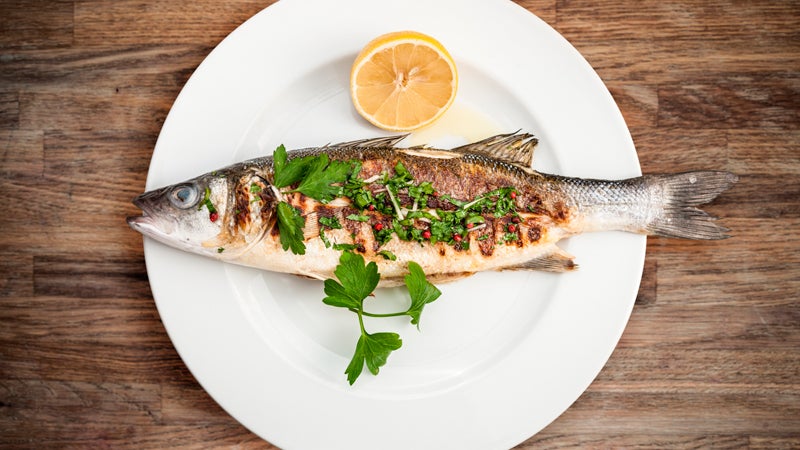That depends how many fish sandwiches you’re eating, says sports nutritionist , RD, CSSD. But aside from mercury levels and other contaminants, there are plenty of other reasons to choose something other than fast-food seafood when you’re out and about.
First, the good news: Fast-food sandwiches and fish sticks are commonly made from fish that are low in mercury (such as pollock and catfish), according to the . A 2005 Perdue University tested mercury and fatty acid levels of fish sandwiches from six retail restaurants, and found that heavy metals concentrations ranged from 5 to 132 parts per billion鈥攚ell below the Food and Drug Administration “action level” of 1,000 ppb. A 130-pound person eating one to two fish sandwiches a week could consume between 2 and 40 percent of the EPA’s maximum acceptable dose of mercury, the researchers concluded.
Fish is also an excellent source of heart-healthy omega-3 fatty acids and low-fat, high-quality protein; it’s also a great way to get minerals like selenium, phosphorus, and iron that can be difficult to find in other foods. And for the general public, the risks of mercury and other contaminants in fish are often overstated, says Dorfman. She cites a 2006 Harvard that found that if 100,000 people ate farmed salmon twice a week for 70 years, the extra intake of PCBs (polychlorinated biphenyls) could potentially cause an extra 24 deaths from cancer鈥攂ut would, meanwhile, prevent at least 7,000 deaths from heart disease.
So, fish are great鈥攊f you know where they come from and that they’ve been prepared via a healthy method. But now, the not-so-good news: “It seems like fish would be your logical choice when you’re out at a fast-food restaurant, but that’s definitely not the case,” says Dorfman. “In terms of fat and calorie counts, fried and breaded fish is one of the worst thing you can order off the menu. You’re better off with grilled chicken or a single burger patty with extra veggies and no cheese.”
In fact, last year the Center for Science in the Public Interest ranked Long John Silver’s “Big Catch” meal鈥攃onsisting of fried fish, onion rings, and hushpuppies鈥攁s the , thanks to its 1,320 calories, 19 grams of saturated fat, and whopping 33 grams of artery-clogging trans fats. The report found that the “7 to 8 ounces of haddock” advertised as part of the meal was actually about 4.5 ounces of fish and 3 ounces of batter and grease. (In August, Long John Silver’s announced that it would discontinue the “Big Catch” and transition to a trans-fat-free frying oil by the end of 2013.)
Obviously not all fish sandwiches are this bad, says Dorfman, but it’s a good example of how a healthy-seeming food can be anything but. And while you’d have to eat a lot of fast-food fish to accumulate dangerous levels of mercury or other toxins in your body, she says it’s another reason to reconsider ordering your favorite combo meal for the third time this week.
Bottom line: Unless you’re eating fish sandwiches every other day, your mercury levels are probably just fine. If you are eating fish sandwiches every other day, you’ve got bigger problems鈥攍ike your daily calorie, fat, and sodium levels鈥攖o worry about first.


